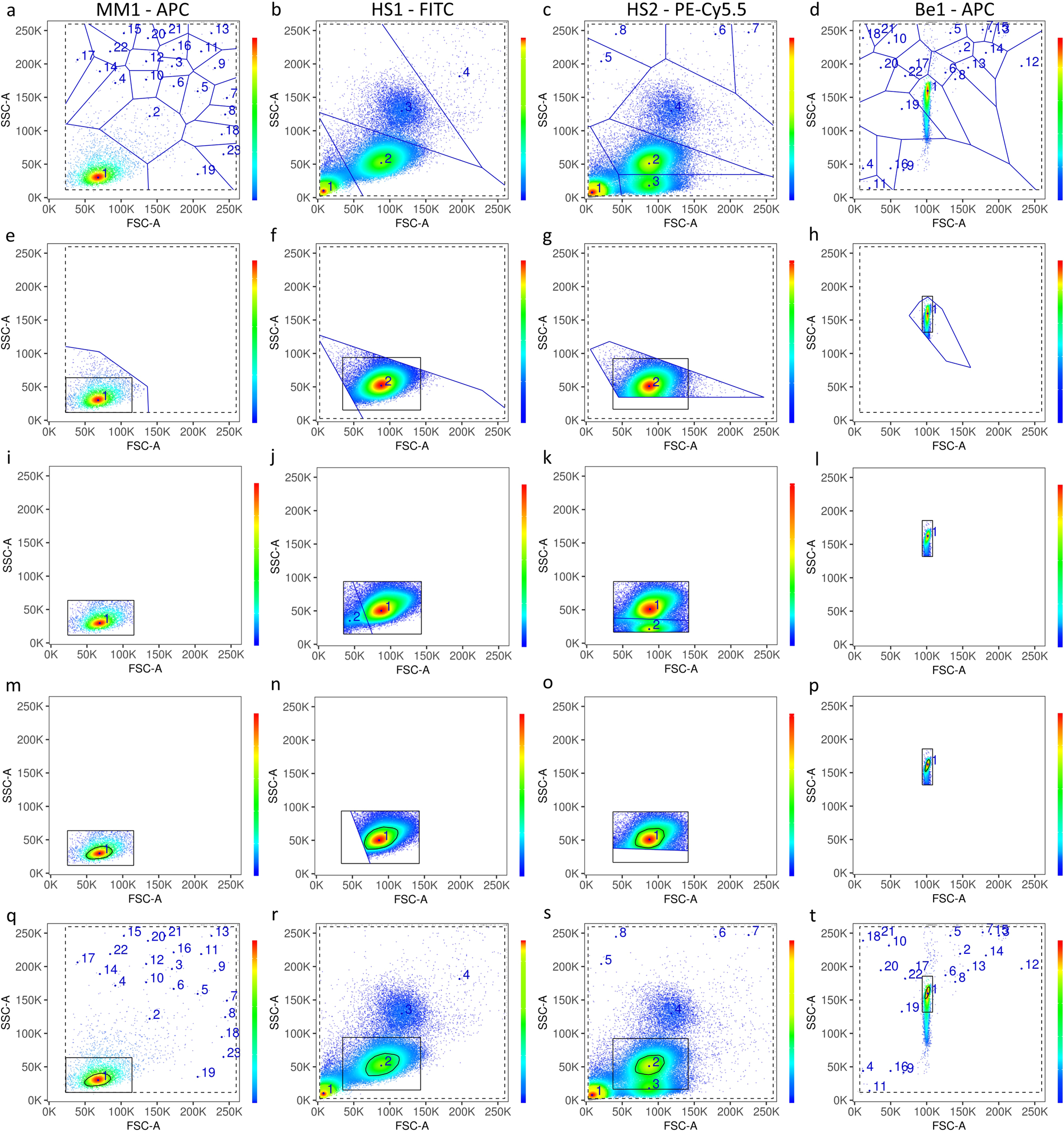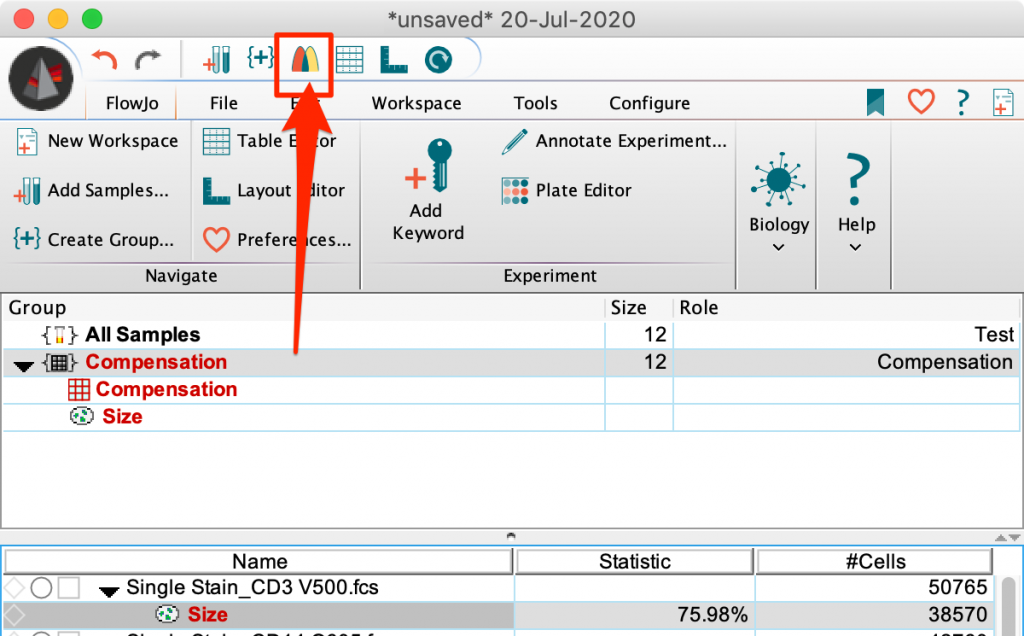



Apply the matrix to the appropriate samples.Open the compensation window drag the positive and negative populations into the appropriate boxes or use the Compensation Wizard for extra flexibility.Define positive and negative gates for each fluorescence channel requiring compensation.Steps involved in compensation by FlowJo: It is important to remember that the negative population and positive population must share the same autofluorescence characteristics for compensation to be valid (i.e., don't use monocytes as a negative control for a lymphocyte stain if you are compensating a stain on fibroblasts, use an unstained fibroblast control). Ideally, you would use a stain that only labels a portion of the sample population, so that you have an unstained set of cells in each tube. Thus, you must collect samples that are singly-stained (as well as unstained) for each of the fluorescences that require compensation. To do this, you will select gates on positive and negative populations for each of these stain, and tell FlowJo to calculate the compensation matrix based on these stains. The remainder of the documentation below is NOT meant to teach you about compensation, simply how to use FlowJo to perform that function.įlowJo computes the compensation matrix on control samples much the way you would manually set the compensation.

Also, there may be cases where the instrument is not capable of compensating between certain channels (for instance, to correct for the spillover between fluorescein and Cy5PE).įor a description of why compensation is necessary, the underlying concepts behind compensation, and some of the pitfalls of improper compensation, see the " Compensation: A perspective" by Mario Roederer (you need to be connected to a network to view this site). This may be necessary in cases where the compensation was inappropriately set during sample collection (although if the sample was over-compensated, then there is no recourse). FlowJo gives you the ability to compensate your data.


 0 kommentar(er)
0 kommentar(er)
